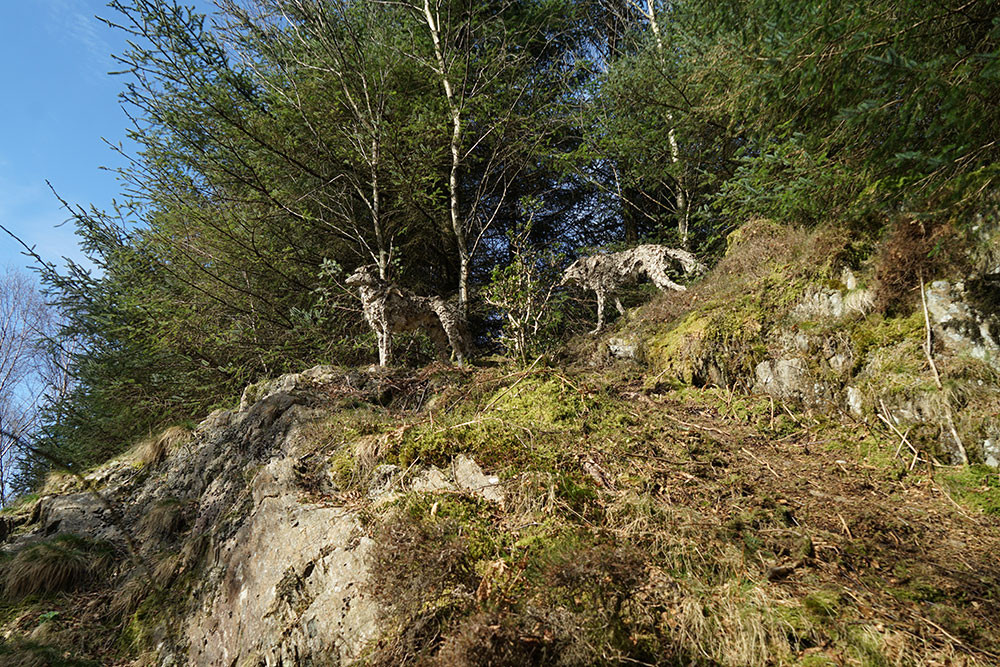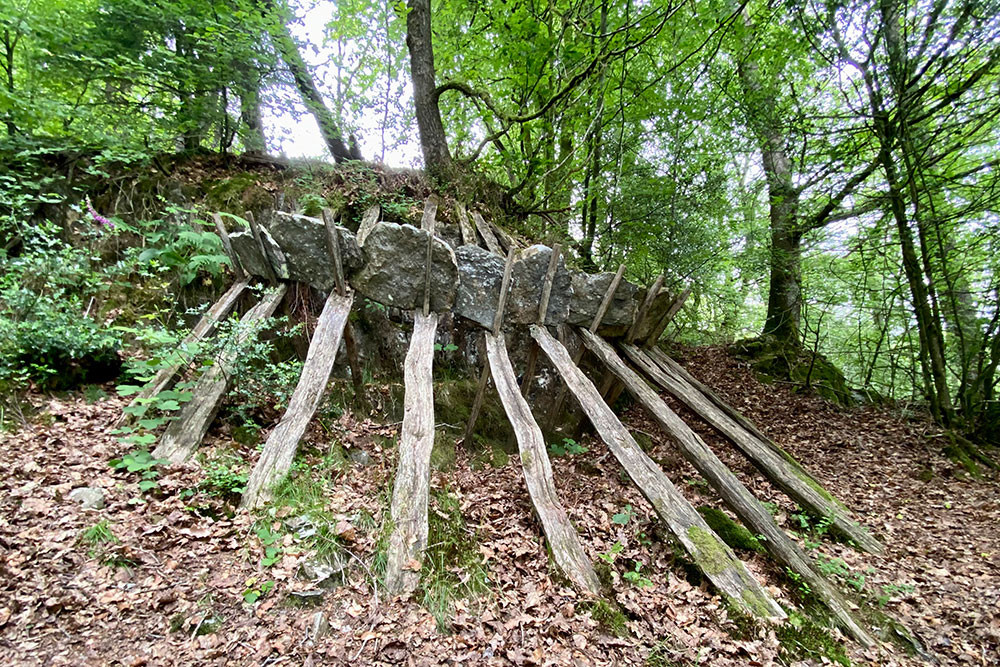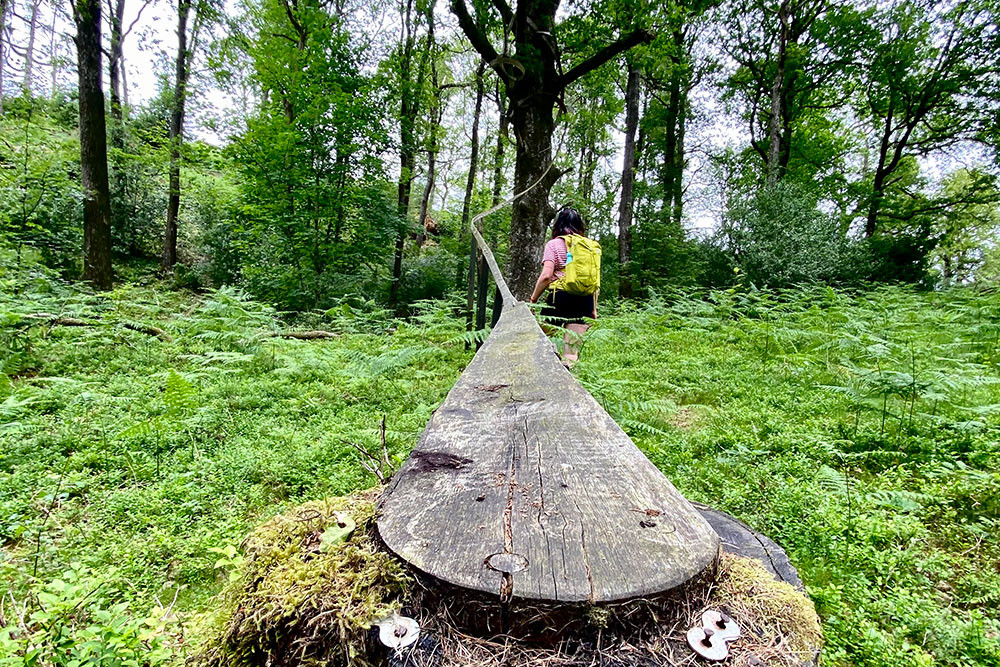Exploring Grizedale Sculpture Forest
(6 minute read)
From nature-worn wooden forms part-reclaimed by moss and fern, to modern metal structures standing proud on exposed hilltops, Grizedale Forest plays open-air gallery to a collection of sculptures by some of the leading names in contemporary art.
On a midsummer’s day, Keswick-based blogger and wild swim guide Ali Phillips took to Grizedale’s trails and woodland paths in search of artistic inspiration. Taking us on a guided tour of her visit and selecting her top 3 sculptures, Ali explains why this art in the wild is accessible to all…

Full of free trails packed into 10 square miles of working forest, the Grizedale Sculpture site was the first of its kind.
It all started in 1977 when artists Richard Harris and David Nash worked together to bring pieces of art to Grizedale as part of a residency programme. There are now over 200 pieces scattered throughout the forest, some temporary and some permanent. The concept of contemporary artwork intertwined with natural surroundings draws artists from around the world to work together at Grizedale.
Whether it’s through seasons, storms or new artists creating sculptures, Grizedale Forest is constantly changing. Once an artist is selected to work with Grizedale, a residency gives them time to respond and react to the forest. There will then be a conversation between the artist, the foresters, rangers and ecologists to find the perfect location for each new piece.
There are also several affordable studio spaces in Grizedale for artists to use, evolving the sustainable forestry model.

Stumbling across new sculptures
Whether you come to Grizedale Forest to walk, run, ride or drink tea, you’ll likely come across one or more sculptures without even meaning to. I have visited before to go riding or running with friends and stumbled across pieces, appreciating their form without stopping to think about why they are placed where they are. On my most recent visit, however, I intended to pause and take in as many sculptures as possible.
There are eight main walking trails and seven cycling trails in Grizedale, meaning you could spend all week exploring the forest and still not see every corner. Each season brings its own joy, too. I was most recently there in June, at the height of summer and tree growth. I hadn’t considered how a sculpture designed to frame a vista might not contain the view when there’s so much foliage.
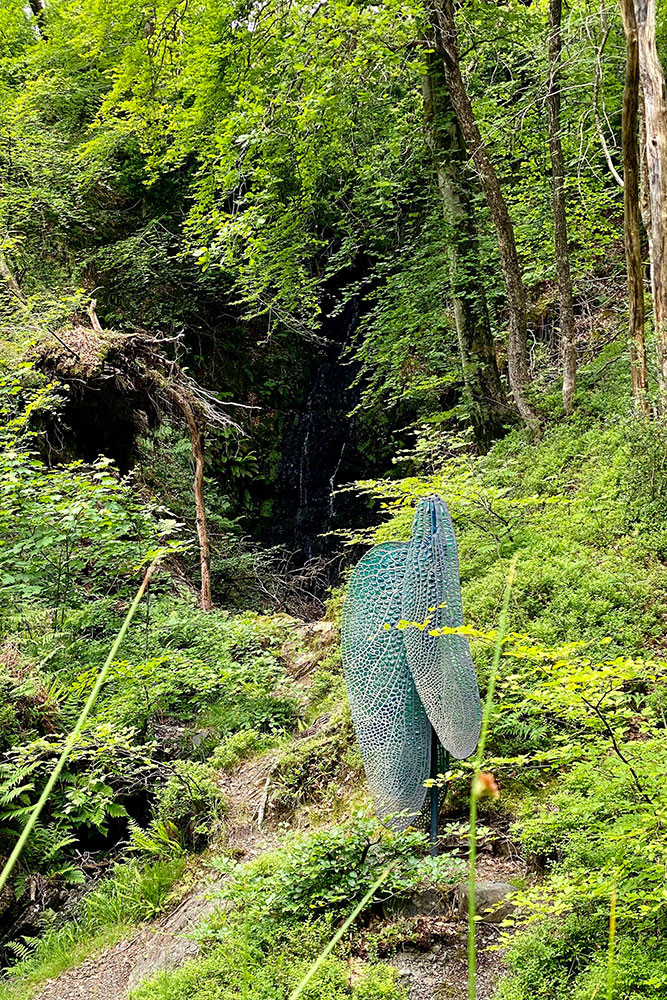
17 Degrees South by Linda Watson is probably one of the most photographed views in the forest, framing Morecombe Bay in a circular piece of wood. In the winter, you could catch a clear sky. However, in summer, the trees create such a dense landscape that you can’t see further than their leaves. But both are beautiful, if unexpected.
The trails shouldn’t be underestimated in winter, either. Most are on good ground; the blue walking route is fully accessible and lots are on forest tracks known as ‘fire roads’. The online guides and £1.50 paper guides you can buy from the visitor centre are worth keeping with you as you navigate the trails. Do ask at the information desk, though, as they can provide plenty of advice on which route will be best for you – but bear in mind that although there is a visitor centre, once you’re out in the forest, there are no other facilities.

Choose your trail
One of my favourite routes I’ve done in the past with family is the Ridding Wood Trail. It’s the shortest and most accessible, but contains The Clockwork Forest by Greyworld. This installation is fantastic for kids who can turn the giant keys on the trees to hear a tune.
On my most recent visit, I combined the Millwood Trail, some fire roads and the Carron Crag Trail. I wanted to see lots of art, old and new, plus head to the highest point in the forest, Carron Crag. These are all on very well-marked trails with coloured posts to point you in the right direction.
The first part of the walk, through the start of the Millwood Trail, was quite badly damaged by the storms of early 2022. Boat Race by Keith Wilson was my favourite in that area, with lots of modern materials in-between all the fallen trees creating real juxtaposition. Although these sculptures are not interactive in the most modern sense, you can walk through them, touch and be a part of them, just like they are part of the forest.

An ever-evolving exhibition
As the sculpture collection is regularly updated and expanded, I wanted to try to see some of the newest pieces. Walking the few kilometres out to Only Breath by Steve Anwar was absolutely worth it. On a clear day, you are high enough and exposed enough here to see all the way down to the coast and over to Lancashire, and I could’ve spent all day sitting up there taking it in and listening to the wind flow around the structure.
Sometimes sculptures move on from Grizedale, as Only Breath will soon. They are always replaced, though, and the forest currently has a Curating Climate Engagement Grant to help artists create new pieces.
The sculptures aren’t always close together, and you can walk for a few miles and only see one or two on your route. But this adds a fun element to hunting them out. The pieces don’t always lend themselves to being directly on the path; or even visible from the main track. Lots are signposted with small wooden totems. Explore beyond them and you’ll find some of the oldest sculptures in the forest.
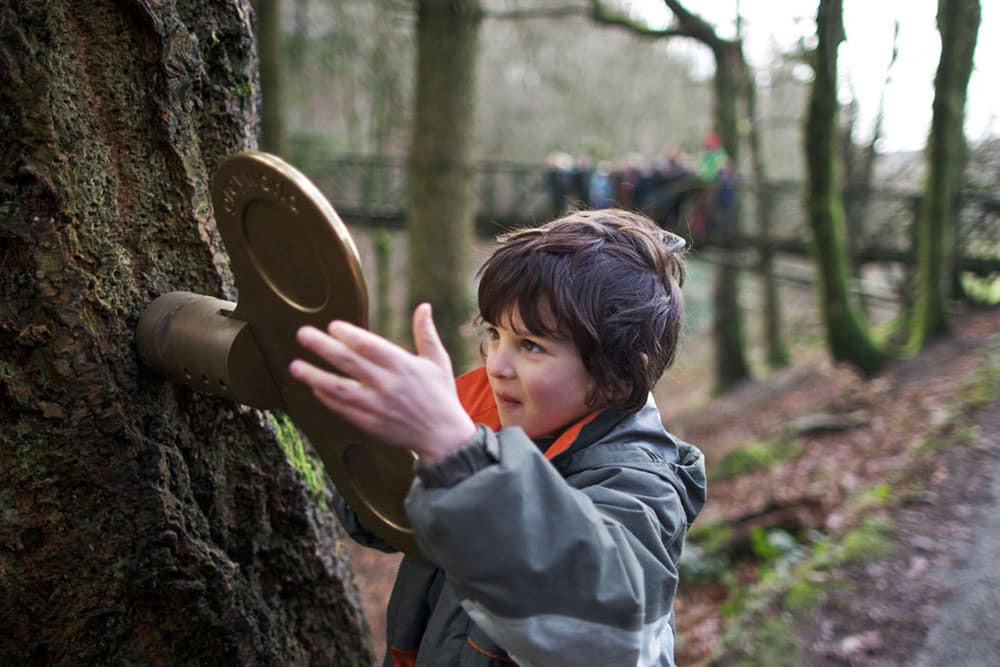
Richard Harris’ 1977 work, Cliff Structure, is featured in the current exhibition at the visitors’ centre. Here, Harris explains where he found his materials for the sculpture and why he chose this space which still hosts one of his first pieces.
“The oak came from wind-blown trees nearby and was cut by hand,” he writes. “I collected slate from an old drystone wall which runs through the forest.” In the exhibition – running until December 2022 – you can see the huge impact the forest had on Harris’ work and the effect that spending time in nature had on the rest of his career.
Nature has really started to reclaim lots of these older pieces, covering them in moss and fern, and weathering them with storms and sun. You could come every year and notice something new in each of the sculptures.
This is clearly something the artists have considered, making their works interact with the landscape in lots of different ways. David Nash, a resident artist in 1978, wouldn’t site an artwork if he felt the location would detract from it. Today, this is still very apparent as you explore Grizedale; each piece has its carefully chosen place.
I couldn’t recommend the ‘best’ time of year to visit, as I think all of the sculptures offer something different throughout the seasons. Weather conditions can of course be more unpredictable in the winter, but even on my visit in June, the wind was howling at the top of Caron Crag. A misty day in the forest, for example, can bring a hugely different experience, with low-lying cloud creating an eerie atmosphere around the sculptures.

MY TOP 3 GRIZEDALE SCULPTURES
Big disclaimer: I don’t pretend to be an art expert, or have much experience in forming an opinion on art. However, I love being outside, and anything that gets me there and helps me enjoy it, I will recommend to anyone who will listen.
1. Treefold: centre, Rob & Harriet Fraser, 2017
This traditional-looking stone wall circle is just off the Carron Crag Trail, but worth the little detour. The wall is inscribed with the words ‘a slow graft on time, seeds ideas earth light elements entwine.’ There’s a single tree planted in the centre which will continue to grow. It’s in an open part of the forest and I would love to come back and see the tree at a later date. This is actually one of three ‘Treefolds’ in The Lake District, another being on The Ullswater Way. It’s an invitation to stop and pause with a single tree. This one is also perfectly aligned for the summer solstice.
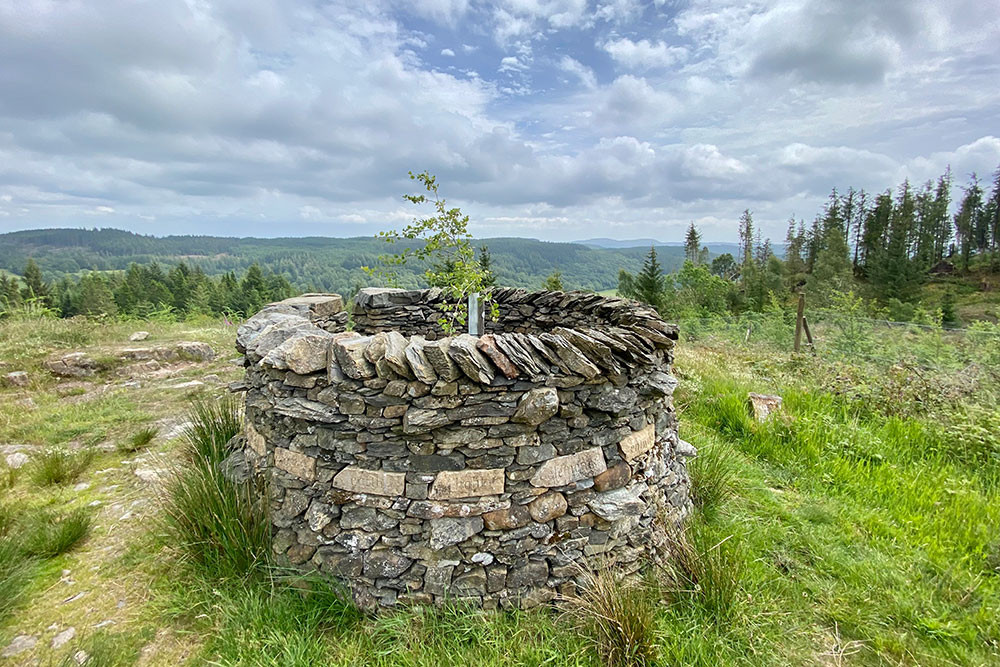
2. Nigel Ross Bench, Nigel Ross, 2013
I love benches in general. They’re normally placed in front of a great view, so you can sit, eat your lunch and take in your surroundings. They can be calm and peaceful or playful and fun. There’s no one correct way to use a bench, but this one invited play.

3. Only Breath, Sapien (Steve Anwar), 2021
This was my favourite of the newer sculptures. A completely metal piece that frames the view but looks like a piece of old machinery, it perfectly reflects the fact that Grizedale Forest is still a working forest and buzzing with life and creation. It captures the view and stands out in a way that still works with the surroundings.
The best and only ways to see the Grizedale sculptures are by foot or bike, but there are trails for everyone, of every age. If art encourages you to get outside in nature, then I am all for it. Or, if you want to see The Lake District from a different perspective, then Grizedale Sculpture is the perfect place to come.

Thank you to Hazel Stone, Arts Development Officer at Grizedale Forest, and the Grizedale Forest front-of-house team for all their help with answering questions.
Ali Philips
Find our more about Ali and Girl About Travel
Girl About Travel is created by local abassadors who offer honest reviews and recommendations, travel ideas, knowledge, expert advice, inspiration and resources from women across the UK and beyond. Girl About is driven by an all-female community of women who will empower and inspire you to make amazing memories
Staying at Another Place
Grizedale Forest is close to Coniston Water and about an hour drive through the Lake District from Another Place. It is 10 square miles of natural woodland and is a large area of completely open, accessible, and free forest and path which is managed and maintained by Forestry England.
It is the UK’s first forest for sculpture.
